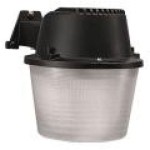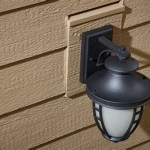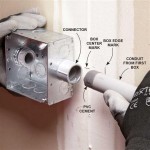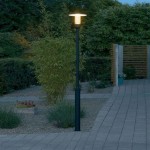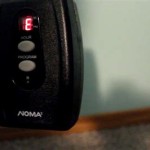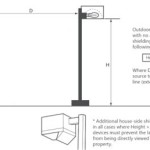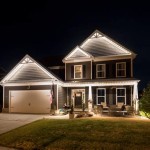Best Outdoor Sensor Lights: Illuminating Your Home's Exterior
Outdoor sensor lights, also known as motion-activated lights, are an indispensable security feature for any home. These lights automatically turn on when they detect movement, providing a powerful deterrent to potential intruders and illuminating pathways for safe navigation. Choosing the right outdoor sensor light depends on your specific needs and preferences, considering factors like brightness, coverage area, and installation type. This article explores the key features to consider when selecting the best outdoor sensor light for your home.
1. Brightness and Coverage Area: The Key to Effective Deterrence
Brightness is a crucial factor determining the effectiveness of an outdoor sensor light. Lumen output measures the light's intensity, with higher lumens indicating brighter light. For deterring intruders, aim for a minimum of 1,000 lumens, while larger areas might necessitate lights exceeding 2,000 lumens. The coverage area, measured in degrees, indicates the range at which the sensor detects movement. A wider coverage area ensures greater security, especially for larger properties or areas with multiple access points.
Consider the specific needs of your property when selecting brightness and coverage. For instance, a narrow driveway might only require a light with a 120-degree coverage area, while a large backyard with access points from multiple directions might benefit from a 360-degree sensor light. This careful consideration ensures that the light effectively illuminates the desired areas and deters potential intruders.
2. Sensor Type and Sensitivity: Tailoring the Light's Response
Outdoor sensor lights employ various sensor technologies, each offering unique advantages. Passive infrared (PIR) sensors are the most common type, detecting heat changes caused by movement. These sensors are typically affordable and effective but can be susceptible to false triggers from animals or wind-blown objects. Microwave sensors utilize electromagnetic waves to detect movement, offering greater accuracy and less susceptibility to false triggers. However, these sensors are generally more expensive than PIR sensors.
Sensitivity settings allow you to adjust the sensor's responsiveness. Higher sensitivity triggers the light with even minor movements, while lower sensitivity requires more significant motion to activate the light. Careful consideration of your property's location and potential sources of false triggers is crucial when selecting the appropriate sensor type and sensitivity. For example, a light near a busy street might benefit from a higher sensitivity to detect passing vehicles, while a light near a wooded area might require a lower sensitivity to minimize false triggers from wildlife.
3. Installation Type: Adapting to Your Home's Design
Outdoor sensor lights are available in various installation types, catering to different architectural styles and property layouts. Wall-mounted lights are the most prevalent option, offering ease of installation and versatility. These lights can be placed strategically near entrances, walkways, and other vulnerable areas. Floodlights are powerful lights ideal for larger areas, providing broad illumination. These lights are typically mounted on a pole or wall, offering wide coverage and strong deterrents.
Other installation types include motion-activated security cameras, combining security and surveillance features, and solar-powered lights, gaining popularity for their self-sufficiency and environmental friendliness. Choosing the installation type that best integrates with your home's design while addressing your security needs ensures the most effective and aesthetically pleasing solution.
4. Additional Features: Enhancing Functionality and Convenience
Beyond basic functionality, outdoor sensor lights offer several additional features that enhance convenience and security. Adjustable timer settings allow you to customize the duration of the light's activation, prolonging its effectiveness and minimizing energy consumption. Some models incorporate daylight sensors, automatically disabling the light during daylight hours to conserve energy and prevent unnecessary activation. Integrated LEDs offer energy efficiency and long lifespans, reducing maintenance and energy costs.
Other advanced features include remote control capabilities, enabling you to activate or deactivate the light from a distance, and smartphone integration, providing real-time monitoring and control. Consider these features to optimize your outdoor sensor light's functionality and improve its overall value.
By carefully considering your home's needs and preferences, you can select the best outdoor sensor light for your property. From brightness and coverage to sensor type and installation type, each factor plays a crucial role in ensuring security, convenience, and energy efficiency. With the right outdoor sensor light, you can illuminate your home's exterior, enhance its security, and create a welcoming environment for yourself and your family.

The Best Led Outdoor Security Lights For 2024 Super Bright Leds
The Best Outdoor Motion Sensor Lights To Keep Your Home Secure

The Best Outdoor Motion Sensor Lights For Your Home Or Business In 2024 Popular Science

Best Outdoor Motion Sensor Lights 2024 Security

7 Best Outdoor Motion Sensor Lights Of 2024 Tested By Bob Vila

7 Best Outdoor Motion Sensor Lights Of 2024 Tested By Bob Vila

9 Best Security Lights With Motion Sensor Deluxe House

The Best Outdoor Motion Sensor Lights For Your Home Or Business In 2024 Popular Science

The Best Outdoor Security Lights Safewise

Best Outdoor Security Lights With S Of 2024 Forbes Home
Related Posts
